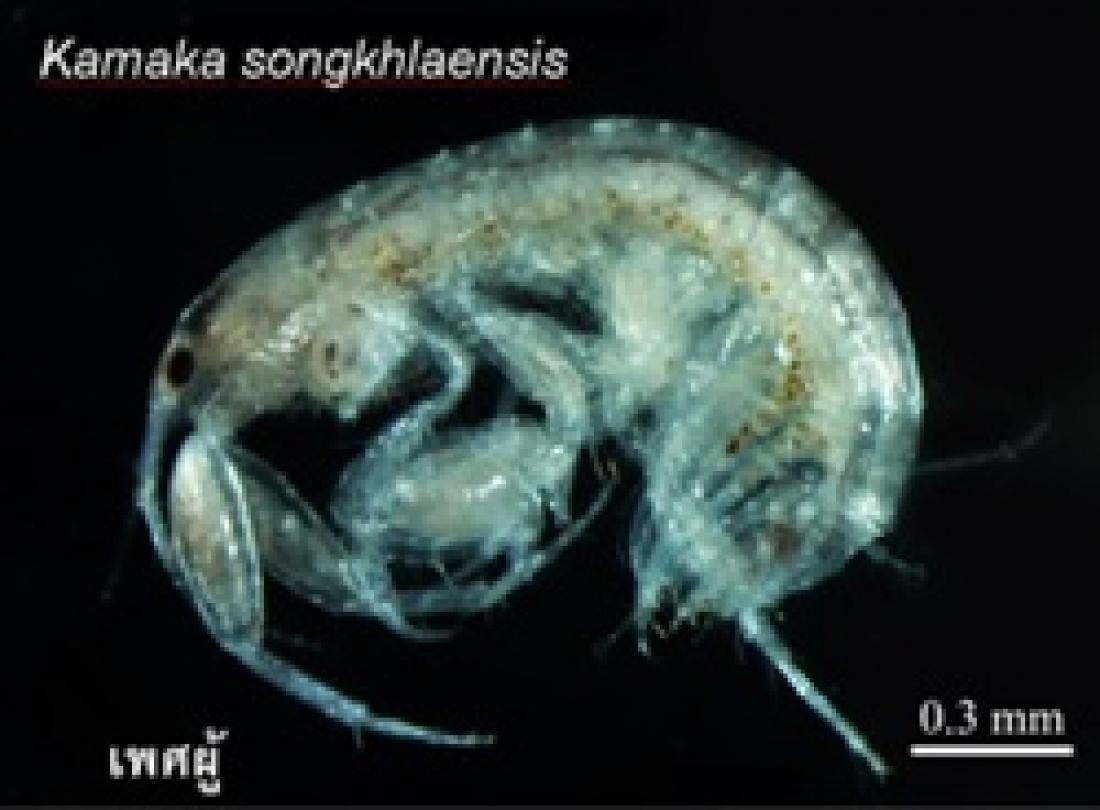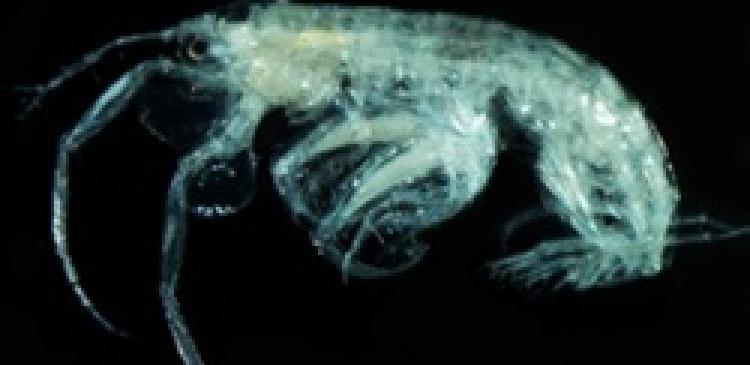One was Karmaka songkhlaensis which were 2-3 millimeters in size, and named after the location in which they were found. They were in abundance in the upper part of the Lake with low level of salinity (about 1-4 parts per thousand) and were also found spreading to the middle part and the lower part in the rainy season when the level of salinity decreases.
The other type was Kamaka appendiculata , 2-3 millimeters in size. They were found in highly saline area (25-33 parts per thousand) and densely populated in the lower part from the mouth of the Lake to Yo Island.
The new species are important to Songkhla Lake ecology. Being food for fish and shrimps, they are part of the food chain. They can help reduce the rotten waste at the Lake bed because they eat organic matters in the soil sediment and they help with the circulation of air and water in the sediment through the holes they live in. Both species of shrimps are found off the coast towards the center of the Lake where the water and sediment are still somewhat clean. The Lake has been contaminated from the coast because there are villages, piers, agricultural activities and industries.
Prof. Dr. Saowapa Angsupanich said that the discovery of these new species was a by-product of the research about animals at the bed of Songkhla Lake. In the past 20 years, data about all living things have been continuously collected: planktons, animals at the bottom of the Lake, seaweeds, sea grass and other animals. The researchers wanted the data to be known among the locals and all the Thais and so asked for a grant from Thailand Research Funds to produce a handbook about Songkhla Lake for secondary school students, teachers, and the general public and a handbook specializing in the study of animals at the bed of Songkhla Lake under the research project titled “Knowledge transfer from the study of animals at the bed of Songkhla Lake to the local community” which are now underway. It is believed that the information from this series of book will be able to raise the local people’s awareness of the value of resources in their own areas and to have common ideas in conserving Songkhla Lake.




